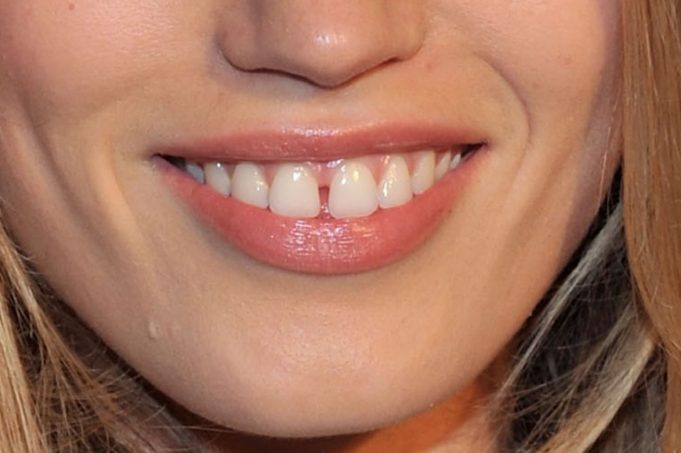There’s a few things more endearing than a beaming toothy grin, but when that grin features a significant gap between the teeth, it might be time to have it looked at by an orthodontist. This gap is known as a diastema, and while in some cases it may close over time, in other instances it can only be fixed with the assistance of an orthodontist.
Here’s an explanation of a diastema and the treatment options available.
What is a diastema?
A diastema is basically the name given to a gap between two teeth. It commonly presents between the two front upper teeth in children as they lose surrounding baby teeth and the jaw begins to grow.
In many cases a diastema will resolve as further adult teeth erupt, but in some instances a diastema is a more permanent feature that benefits from treatment like braces.
What causes a diastema?
Mismatched jaw and teeth size
A diastema can have a number of causes, some temporary but some more complex. In most cases it’s caused by a mismatch between the size of the jaw and the size of the teeth. That’s why it’s common in children who have a few adult teeth but are still in the process of losing their baby teeth.
In this scenario a diastema may resolve over time as the larger adult teeth erupt and take up their rightful position.
However, sometimes the jaw size is too large for even a complete set of adult teeth, and the gap, or gaps, remain. In this scenario orthodontic treatment like braces assists by shifting the teeth closer together and closing any gaps.
Missing teeth
A diastema can also develop if baby teeth have been prematurely lost, when an adult tooth fails to erupt or when a permanent tooth is missing due to trauma or decay.
In this instance an orthodontist should be consulted for a number of reasons. Baby teeth are place-holders for their adult counterparts, so if they are lost prematurely, neighbouring teeth may shift into the space but not completely fill the gaps.
Rather than this occurring and leading to problems with the position of emerging adult teeth, an orthodontist may fit a space maintainer to keep the rightful position for an incoming adult tooth.
If an adult tooth has failed to erupt or has been lost to injury or trauma, an orthodontist is just one of the specialists you may need to visit. An orthodontist can assist by either shifting remaining teeth into a neat, closely aligned position, or can hold the existing teeth in their rightful spot as you consider a prosthetic replacement.
Oversized labial frenum
The labial frenum is the tissue that extends from inside your top lip to just above the two top teeth. Yet in some people, the labial frenum continues to grow down and between the two front teeth, leaving a space.
This is usually treated by minor surgery. In young children the surgery may allow the gap to close on its own. In older children and adults, braces may be required to close the gap.
Habit
Habits such as thumb sucking can also result in a diastema. Thumb sucking can cause the front teeth to thrust forward, creating a gap, while difficulty swallowing may result in the tongue applying pressure to the front teeth and pushing them forward over time.
An orthodontist can assist in this case by straightening the teeth that have moved.
About Norwest Orthodontics
Norwest Orthodontics specialises in helping you achieve a great smile, no matter your age. We feature a range of orthodontic treatments that span from early intervention right through to remedial adult work.
We also have a suite of treatments available that include discrete, removeable Invisalign braces, and welcome the opportunity to work with you to achieve the smile you’ve always dreamed of.
You can learn more about our services, or contact us to make an appointment.




